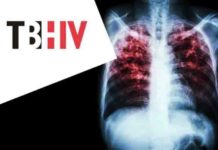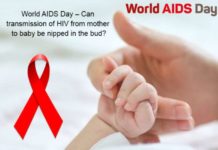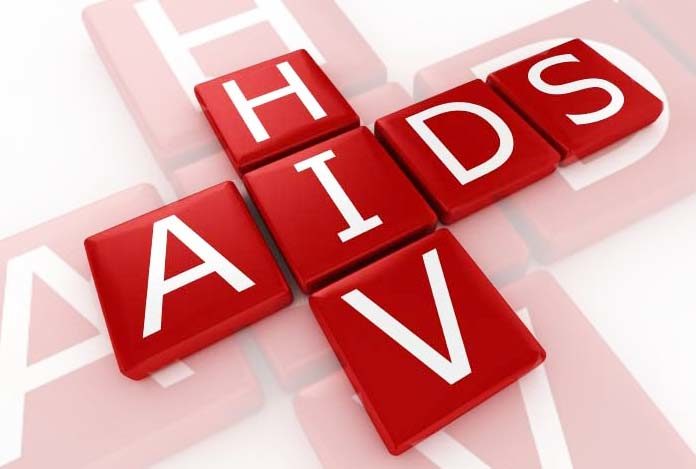
Overview and Statistical Facts
Immune system comprises of a dense network of cells and tissues that are engaged in protecting the body against disease-causing organisms such as bacteria, virus, fungi etc. For the immune system to function properly, it needs to distinguish the body’s cells from foreign cells. To aid in this process, there are a number of cells that specialize in it. These cells are known as B cells and T cells. Immunodeficiency occurs when the function of immune system is impaired, resulting in life-threatening conditions as the body becomes susceptible to invading foreign organisms. Such a condition arises when the body is infected with HIV, Human immunodeficiency virus, which is responsible for causing immunodeficiency. This puts the infected person at a high risk of developing life-threatening infections. AIDS or Acquired immunodeficiency syndrome is the final stage of HIV infection. In this, the body’s T cells or CD4 cells are destroyed by the virus and hence the immune system cannot protect the body against foreign invaders. Opportunistic bacteria take advantage of the weakened immune system and make the person extremely sick. In the advanced stages of AIDS, the person dies. The biggest problem with HIV infection is that the body cannot rid itself of the infection. Hence it is a lifelong condition.
HIV is a mutated form of simian immunodeficiency virus (SIV) that infected chimpanzees. It was introduced to the human population when humans hunted these chimpanzees for food and came in contact with their infected blood. Today it has grown to become a major public health concern, after claiming more than 35 million lives. In 2016, 1 million people died from HIV-related causes across the globe with approximately 36.7 million people living with the infection. 54% of adults and 43% of children living with HIV are on lifelong treatment with antivirals. Africa is the most severely affected continent from where HIV originated, with 25.6 million people currently living with HIV infection. It is estimated that only about 70% people with HIV know their infected status In mid-2017, there were 20.9 million people who were living with HIV infection and receiving proper treatment. There has been a decline in HIV related deaths due to extensive efforts by national HIV programs carried out by civil society.

Types and Symptoms of HIV
There are two types of HIV :
- HIV-1
- HIV-2
Both these viruses can lead to AIDS but they are approximately 55% different from each other in their genetic makeup.
1)HIV-1
HIV-1 is more common than HIV-2. HIV-1 is divided into one major group, Group M and possibly three small groups, namely Group O, N and P. More than 90% cases of HIV/ AIDS are derived from Group M of HIV-1. Group M can be further divided into 9 clades, called subtypes, namely A,B,C,D,E,F,G,H,I,J,K.
|
Subtype of Group M |
Region |
|
A |
West Africa |
|
B |
Europe, the USA, Japan, Australia, Middle East, North America |
|
C |
Southern Africa, Eastern Africa, India, Nepal, and parts of China |
|
D |
Eastern and Central Africa |
|
E |
Southeast Asia (common among heterosexuals) |
|
F |
Central Africa, South America, Eastern Europe |
|
G |
Africa, central Europe |
|
H |
Central Africa |
|
I |
Unspecified |
|
J |
North, central and west Africa, Caribbean |
|
K |
Democratic Republic of Congo, Cameroon |
Table1: Table showing the geographical distribution of subtypes of Group M of HIV-1
2) HIV-2
HIV-2 is a closer relative of SIV and is mainly confined to countries of West Africa. It is less prevalent and pathogenic (disease-causing). There are 8 known groups of HIV-2 (A to H), out of which only A and B groups are pandemic. Groups C and D have been detected in two people from Liberia, groups E and F have been found in two people of Sierra Leone and groups G and H in two people from the Ivory Coast.
It is possible to get infected by multiple strains of HIV because, during multiplication of the virus in the body, there can be a change in the genetic material of the virus, leading to the formation of a different strain of HIV. Also, if the patient gets infected through different sources, then he can be infected with more than one strain.
The signs and symptoms of HIV depend on the stage of infection. In most of the cases, the person is asymptomatic till the infection reaches its last stage. There are three stages of HIV infection.
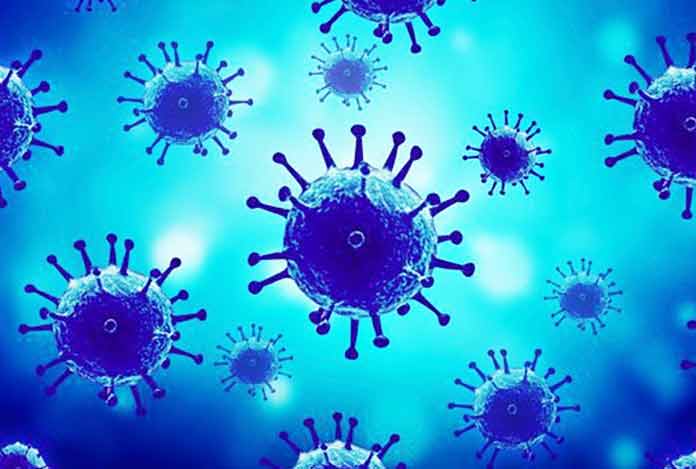
Stage 1: Acute HIV infection
Immediately after the exposure to HIV, the person might experience no symptoms or flu-like sickness characterized by fever, headache, sore throat, rash etc. Most of the people are unaware of their infected state at this point because the infection does not show any symptoms right away. If a person thinks that he might have had an exposure to HIV through physical contact or drug use or blood transfusion etc and there are flu-like symptoms, such as
- Fever
- Chills
- rash
- Night sweats
- Sore throat
- Swollen lymph nodes
- Fatigue
- Mouth ulcers
then, he must get himself checked for HIV infection through a blood test.
Stage 2: Clinical latency (HIV inactivity or dormancy)
This is the period in which the virus multiplies slowly. However, the patient is still contagious and can transmit the virus. He may or may not show any symptoms. For some people, this period can last a decade or longer but in some, it can progress very fast. After this stage, the virus begins to multiply at a higher rate and the levels of CD4 cells in the blood starts to decline rapidly. As this stage begins, the person might begin to show certain symptoms such as:
- Swollen lymph nodes
- Fever
- weight loss
- Cough
- Diarrhea
People who are under treatment for HIV, they stay in this stage for a longer time because the medicines restrict the viruses from multiplying. People who are on these medicines are at a lower risk of transmitting the infection due to viral suppression.
Stage 3: Acquired immunodeficiency syndrome (AIDS)
This is the most severe stage of HIV infection and the patient has a badly damaged immune system. He becomes susceptible to developing infections from opportunistic organisms. Without treatment, the patient has a life expectancy of 3 years or less. Common symptoms of AIDS are:
- Chills
- Recurring fever
- Swollen lymph glands
- Weakness
- Rapid weight loss
- Profuse night sweats
- Diarrhea lasting for more a week
- Sores of mouth, anus or genitals
- Pneumonia
- Red, pink, brown or purplish blotches on or under the skin or inside the mouth, nose or
- eyelids
- Neurological disorders like memory loss, depression etc.
When the CD4 levels in the blood go down below 200 cells/mm or if the person shows symptoms of opportunistic infection, then the person is said to have AIDS. People with AIDS have a high viral load and are highly contagious.
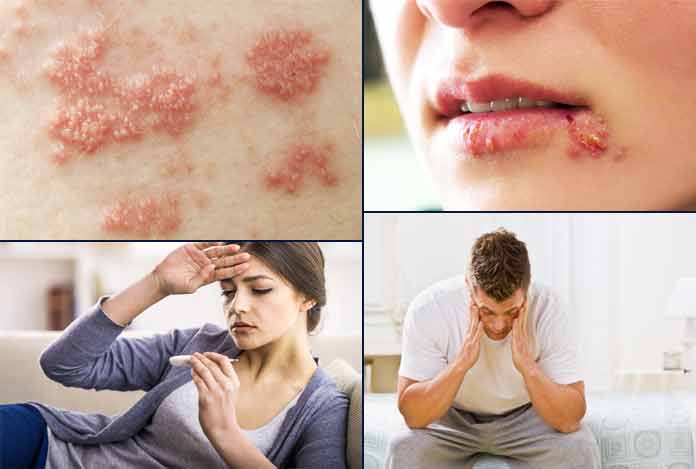
Risk Factors of HIV
The risk of contracting an HIV infection depends on the type of exposure or behavior. Following are the potential risk factors that lead to HIV infection:
- Blood transfusion
- Needle sharing during injection drug use
- Percutaneous i.e. needle stick
- Unprotected anal intercourse
- Unprotected vaginal intercourse
- Oral intercourse
- From mother to baby during pregnancy, birth or breastfeeding
- Men having sex with men
- People having other sexually transmitted diseases like syphilis, herpes, chlamydia, gonorrhea, bacterial vaginitis etc.
- Organ or tissue transplantation from an HIV positive person
However, people should be aware that HIV is not transmitted through ordinary contacts such as handshake, hug, kiss or by sharing food and water.

Do I have HIV infection?
The only way of determining whether you have HIV infection is through extensive blood tests. If you are at a high risk of developing HIV infection, you should get yourself tested. If you develop flu-like symptoms such as fever, chills, rash, muscle aches, fatigue, swollen lymph nodes, mouth ulcers, night sweats etc. a few weeks later after the alleged exposure to HIV, which last for few days to several weeks, then you might have contracted HIV.
If you have these symptoms, it does not necessarily mean that you have HIV. It might be influenza or any other infection. But if these symptoms arise after a potential HIV exposure, then you must get yourself tested.
After you receive positive test results, it is necessary to discuss your results with a health care provider and take necessary steps to start your treatment process as early as possible. If you receive a negative result, you must take necessary steps to protect yourself from such exposures in future.

Causes and Prevention of HIV
HIV infection is caused when a person comes in contact with the infected body fluid of an HIV patient. These body fluids include:
- Blood
- Pre-seminal fluid
- Semen
- Vaginal fluids
- Anal fluids
- Breast milk
However, it should be noted that HIV cannot be transmitted through sweat, tears, urine or saliva unless they are mixed with the blood of an infected person. Also, transmission through oral sex depends on whether the healthy person is giving or receiving oral sex and the presence of any bleeding sores in the moth of an infected person. HIV is not transmitted through air, mosquito bite, ticks or other insects.
A healthy person can come in contact with these body fluids in a number of ways, namely
- Sharing of needle, syringes or other injecting equipment
- From mother to baby during pregnancy, birth or breastfeeding
- People involved in unsafe sex practices
- People receiving organ and tissue donations
- People requiring blood transfusion
- Babies being born to or breastfed by mothers having HIV infection
In order to prevent contracting HIV infection, following precautionary measures should be taken:
- Knowing about HIV status of one’s sexual partner(s)
- Practicing safe sex
- Limiting number of sexual partners
- Undergoing diagnosis and proper treatment for other sexually transmitted diseases
- Undergoing per-exposure prophylaxis (PrEP) for people at high risk of getting an HIV infection
- Avoiding sharing of needles, syringes and other injecting equipment
- Voluntary medical male circumcision
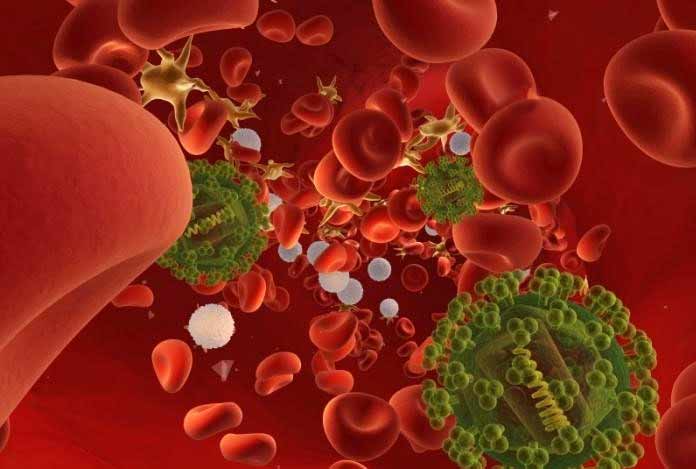
HIV Preventive Vaccine:
HIV preventive vaccines are given to healthy people to help their immune system identify HIV when exposed and prevent developing an infection. These vaccines do not cure a person already infected with HIV.
Currently, there are no FDA approved vaccines for preventing an HIV infection. However, clinical studies are being undertaken extensively to develop it. A person who is at a high risk of contracting HIV infection can get these vaccines by enrolling in a clinical study.
People infected with HIV can benefit by getting themselves vaccinated with following injections to prevent the development of HIV related illness:
- Pneumonia
- Influenza
- Hepatitis B
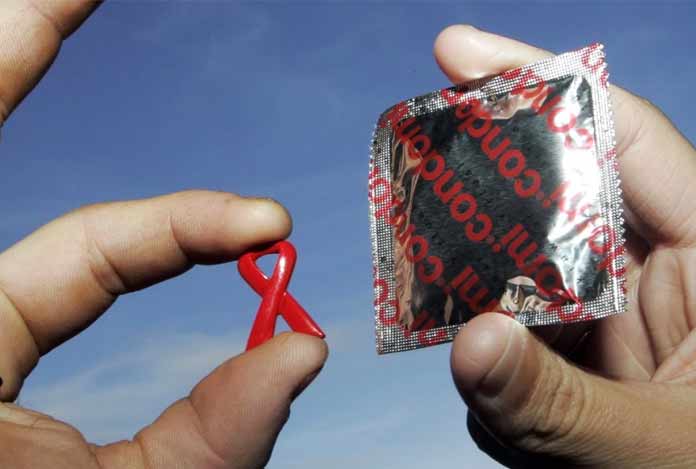
Diagnosis and Tests of HIV
HIV infection is most commonly diagnosed by blood tests. These blood tests are based on detecting the presence of antibodies made by the body in response to an HIV infection. If a person suspects that he has been exposed to HIV infection, then he should get himself tested immediately. However, the body might take six weeks to one year to produce these antibodies. In such cases, follow up tests are scheduled, depending upon the duration of exposure.
Early detection of HIV is extremely important as it can help in implementing a treatment plan at the earliest. It will also alert the infected person about the high-risk behaviors that might spread the infection to other people.
Anonymous testing is also available to help people get their tests done without being judged.
During the test, the medical practitioner analyses the patient’s symptoms, medical history, risk factors and conducts a physical examination.
1) ELISA Test
ELISA stands for enzyme-linked immunosorbent assay. It is a test in which the presence of antibodies is tested in the blood. It is a sensitive test but can give false results if the test is done too early. This occurs because the concentration of antibodies in the body itself is too less to be detected. A person who is susceptible to having an HIV infection must undergo another test after one to three months. It should also be noted that while the number of antibodies in the blood might be less, the person still has a high content of virus in the body and can infect others. Hence, proper precautions must be taken.
2) Home Tests
There is only one home test approved by the FDA, known as Home Access Express Test. In this test, the finger pricked blood spots are dried on a special paper which is mailed to the clinical laboratory with a special personal identification number (PIN) where it is analyzed. The results are obtained by calling on a toll-free telephone number using the PIN and post-test counseling is also provided through telephone after the results are obtained. This test maintains confidentiality and anonymity.
3) Saliva Test
Saliva is obtained from the inner lining of the mouth and is collected using a cotton swab, which is sent to the lab for evaluation. If the result comes out to be positive, it is confirmed by a blood test.
4) Western Blot
It is an extremely sensitive test that is used to confirm ELISA test.
5) Tests to tailor treatment
If a person receives a positive result for HIV test, then following tests are performed for determining the stage of infection:
CD4 count: HIV infection is said to have progressed to AIDS when the CD4 levels in the blood drop down to 200 or less.
Viral load: In this test, the amount of virus in the blood is evaluated. This test is generally used to monitor the progress of treatment or for early detection of HIV infection. There are three technologies that are used to measure the viral load, namely;
- Reverse transcription polymerase reaction (RT-PCR)
- Branched DNA (bDNA)
- Nucleic acid sequence-based amplification assay (NASBA)
It should be noted that results might vary between different tests.
c) Drug resistance: In this test, it is determined whether the strain of virus infecting the person is resistant to any anti-viral drug or not.
6) Tests for complications: Tests might also be performed for determining if the person has any other infection or complication arising due to HIV infection, such as:
- Tuberculosis
- Hepatitis
- Toxoplasmosis
- Sexually transmitted disease such as herpes, gonorrhea, chlamydia, hepatitis B etc.
- Liver or kidney damage
- Urinary tract infection
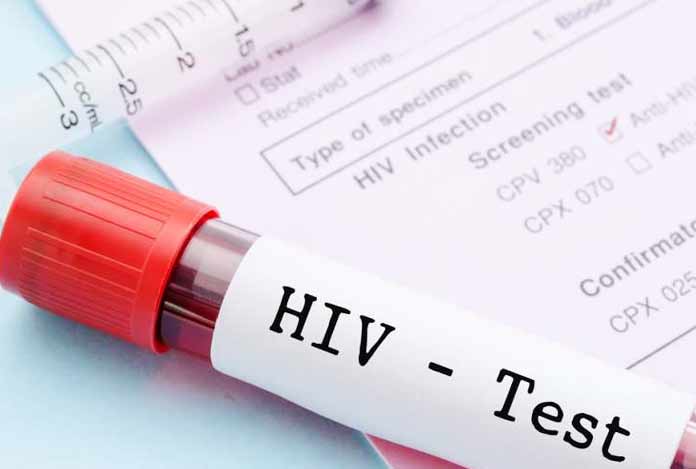
Treatment and care of HIV
Presently, there is no cure for HIV/AIDS. However, a number of drugs can be used to manage the infection successfully. There are different classes of drugs that block the multiplication of the virus in the body, each having their own way of action. The treatment is designed in a way that combines one or more classes of medicines to avoid development of resistant strains of the virus.
Following are the various classes of drugs that are used for managing HIV infection:
Non-nucleoside reverse transcriptase inhibitors (NNRTIs)
These medicines block the action of a protein needed by the virus to multiply. Examples include efavirenz, nevirapine, etravirine etc.
Nucleoside or nucleotide reverse transcriptase inhibitor (NRTIs)
These are basically faulty versions of the building blocks that are required by the virus to multiply. They compete with the normal building blocks and restrict the replication of nuclear material of the virus.
Examples include delaviridine, efavirenz, nevirapine etc.
Protease Inhibitors: These drugs block a protein that is required by HIV to multiply. Examples include atazanavir (ATV), darunavir (DRV), saquinavir (SQV) etc.
Fusion Inhibitors: These drugs prevent entry of HIV into healthy cells. Enfuvirtide is a drug that qualifies in this class and is FDA approved. Other drugs such as fostemsavir, ibalizumab, PRO 140 are some other drugs working on the same lines but are yet to be approved by FDA.
CCR5 Antagonist: These drugs do not allow entry of HIV into healthy cells by blocking a certain ‘hook’ present on the outside of healthy cells on which the virus adheres. Maraviroc is a drug belonging to this class.
Integrase Inhibitors: These drugs do not allow the virus to integrate its genetic material with that of host cells by blocking a key protein which facilitates this process. Examples include dolutegravir, elvitegravir etc.
It is recommended to take combinations of antiviral drugs for managing HIV infection. This is called Antiretroviral therapy (ART). ART regimen is designed to attack the virus on more than one front and also to prevent the development of drug-resistant strains of HIV.
It is also recommended to follow the exact instructions while taking the medicines and even one dose should not be missed, otherwise, there is a chance of developing drug-resistant strains of HIV and the medicines can stop being effective altogether.

OTC Medication or Self-management Methods For HIV
There are no over-the-counter medications available for treating or managing HIV infection. It is also advised not to take any medication, even for trivial symptoms, without consulting the medical practitioner because of the risk involved in developing serious side effects due to the interaction with ART.
For self-management of HIV, patient and people taking care of the patient require support and information. Apart from medical assistance, the patient requires behavioral intervention too. Patient must have correct information about the following:
- Basic understanding of the disease and its treatment
- Understanding the self-management skills for managing HIV
- Support extended by the patient’s family, friends, community and his medical team
- Self-management involves all those activities that are performed by the patient to manage his illness, prevent complication and deal with the impact of disease and its treatment on him and the people associated with him. This includes;
- Collective goal setting
- Monitoring symptoms
- Lifestyle changes such as eating a healthy diet, regular exercise and cessation of smoking
- Taking medicines as instructed by the health care provider at the exact time and with the same frequency, each day, every day
- Patients must make changes in his daily life to adapt to the wide array of emotional and physical stresses that the disease brings with itself.

Natural ways to cure HIV
Following are some of the therapies that can be used managing HIV infection:
- Neem leaf
- Green tea
- Turmeric
- Cinnamon
- Licorice
- Olive leaf extract
- Lemon juice and lemongrass
- Pomegranate
- Licorice
- Korean ginseng
- Immune-boosting foods like mushrooms, fermented foods, walnuts coconut oil etc.
- Vitamin D supplements
- Omega -3 fatty acids
However, the efficacy of these remedies has not been examined and their interaction with ART is not clearly understood. Hence it is advised to take any supplement only under medical supervision.

Health Tip by Experts
HIV is a life-threatening condition which does not have any cure till date. However, it can be managed with Antiretroviral therapy. In the last stages, it develops into AIDS which is deadly. By following safe sex practices, staying away from drug abuse through sharing of needles and taking precautions at the time of blood transfusion and organ transplantation, contracting HIV infection can be prevented. People infected with HIV can still lead a near-normal life through ART.


